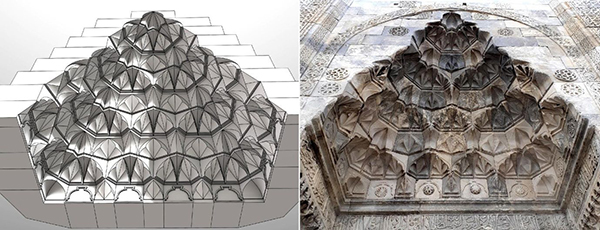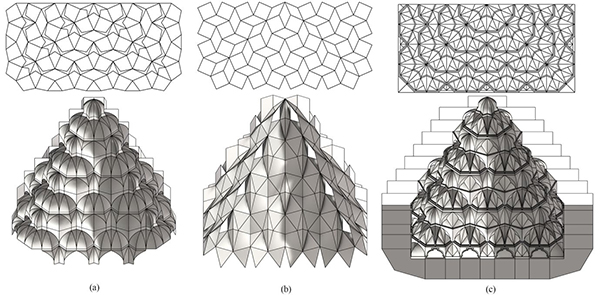On the Digital ReConstruction of Muqarnas
by Tuğrul Yazar | August 23, 2021 22:01
Together with Sevde Dinçer, we published a new study on the digital reconstruction of muqarnas[1]. This is also Sevde’s ongoing Ph.D. topic. Previously, she started studying muqarnas geometry in her master thesis under the supervision of Togan Tong. Then, she advanced her studies in this field. Eventually, my contribution to this study was about redefining and comparing the three major modeling approaches. Apart from that, the case study, literature research, and all the rest were done by her.

This paper presents a comparative case study on the digital modeling workflows of a particular muqarnas system. After the literature review, we defined several digital modeling workflows. These are element-based, tessellation-based, and block-based workflows. We tested them on a muqarnas located at the Sultanhanı Caravanserai in Central Anatolia. Then, we compared the workflows according to three qualities: analytical, generative, and performative. The outcomes of the element-based workflow have more analytical solutions for the study, where tessellation-based workflow has more generative potential and block-based workflow is more performative.

You can find the paper here[2]. The block-based model especially interests me. Because it also attempts to explain the underlying structure. This is a distinguishing feature of Seljuk muqarnas. Although there are many studies on the geometric analysis of muqarnas, it is still an active research field. There is no single method or solution that is capable of explaining every instance. This methodological diversity leads to a rich research field. As an alternative to the most common element-based approach, we proposed two new modeling workflows. We expected these workflows to help examine the relationship between mathematics and architecture with a new and fresh look.
- muqarnas: https://www.designcoding.net/parametric-muqarnas/
- here: https://journals.sagepub.com/doi/abs/10.1177/1478077121992487
Source URL: https://www.designcoding.net/on-the-digital-reconstruction-of-muqarnas/